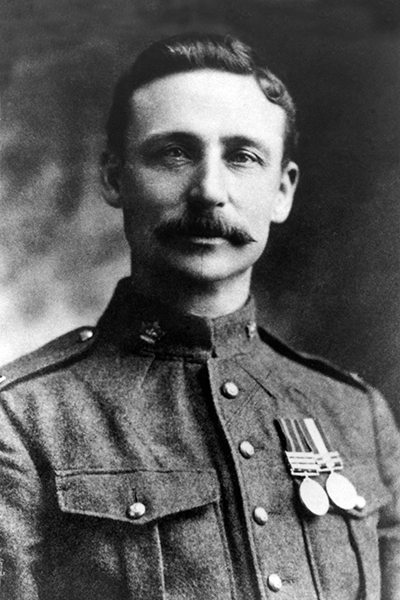Frederick Hobson
As stated in the following London Gazette citation, Frederick Hobson is a recipient of the Victoria Cross. This medal is awarded for the most conspicuous bravery, a daring or pre-eminent act of valour, or self-sacrifice or extreme devotion to duty in the presence of the enemy.
Victoria Cross - First World War, 1914-1918

Frederick Hobson was born in London, England on 23 September 1873. After seeing action with the British Army during the South African War (1899-1902), he came to Canada and settled in Galt (now Cambridge), Ontario. Being 41 years old when he went to the recruiting office shortly after the First World War began, Hobson gave his year of birth as 1875 so that he would be allowed to enlist in the Canadian Expeditionary Force.
On 18 August 1917 Sergeant Hobson was serving with the 20th Infantry Battalion on Hill 70, near Lens in France. During a German counterattack on the Canadian lines, a Lewis light machine gun in a forward position was buried by a shell explosion that killed all but one of the its crew. Hobson hurried to the site, dug out the Lewis gun, and got it back into action against the attacking enemy soldiers. When the gun jammed, Sergeant Hobson, though wounded, left the gunner to clear the stoppage and advanced alone to confront the Germans. Using his bayonet and rifle butt, he held them at bay until he was killed by a rifle shot. By that time the Lewis gun was again firing, and shortly after reinforcements arrived to defeat the counterattack.
For these actions Sergeant Hobson was awarded the Victoria Cross posthumously
Citation
During a strong enemy counter-attack a Lewis gun in a forward post in a communication trench leading to the enemy lines, was buried by a shell, and the crew, with the exception of one man, killed.
Sjt. Hobson, though not a gunner, grasping the great importance of the post, rushed from his trench, dug out the gun, and got it into action against the enemy who were now advancing down the trench and across the open.
A jam caused the gun to stop firing. Though wounded, he left the gunner to correct the stoppage, rushed forward at the advancing enemy and, with bayonet and clubbed rifle, single handed, held them back until he himself was killed by a rifle shot. By this time however, the Lewis gun was again in action and reinforcements shortly afterwards arriving, the enemy were beaten off.
The valour and devotion to duty displayed by this non-commissioned Officer gave the gunner the time required to again get the gun into action, and saved a most serious situation.”